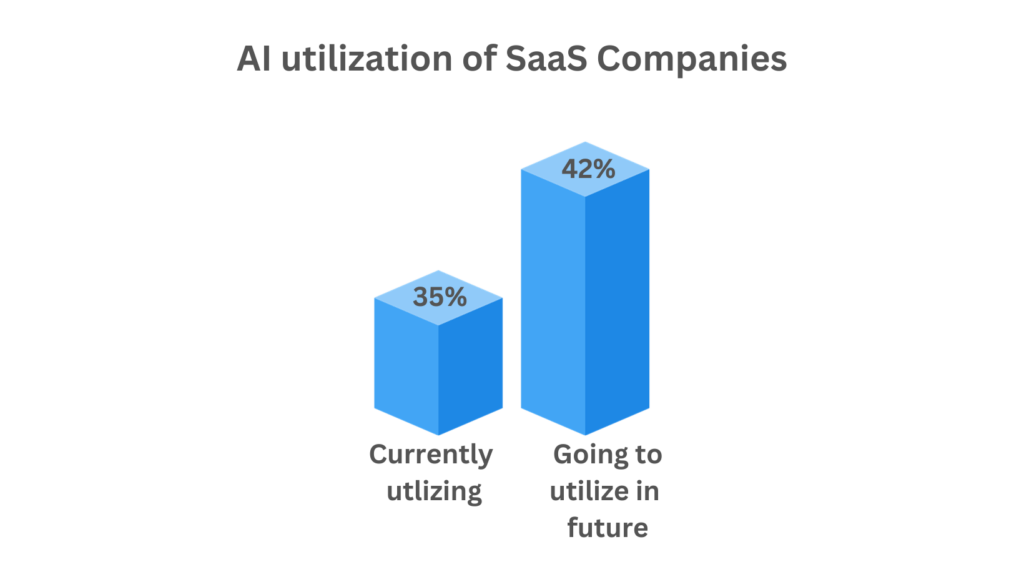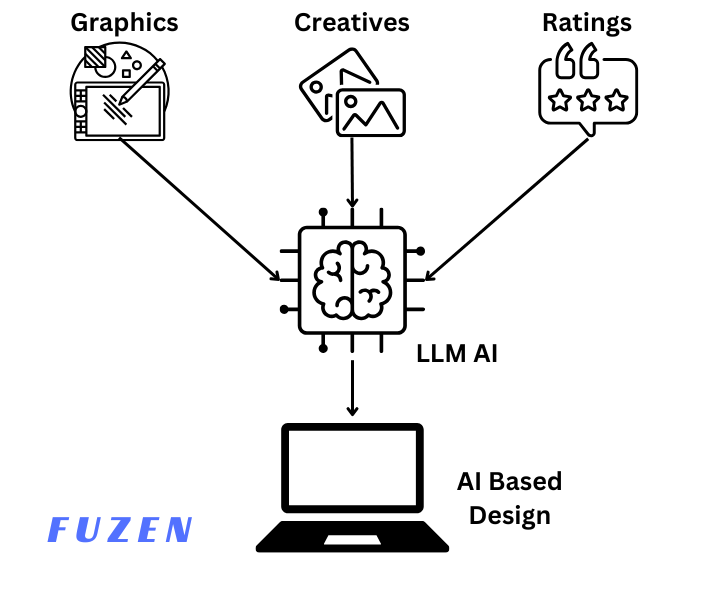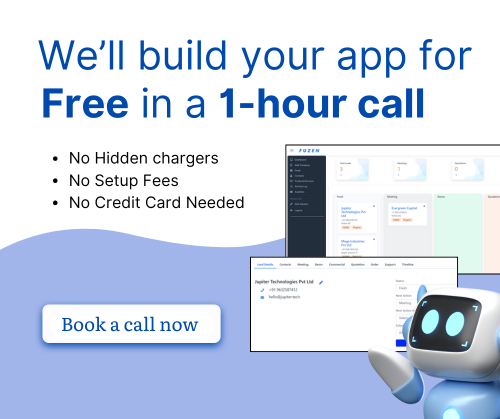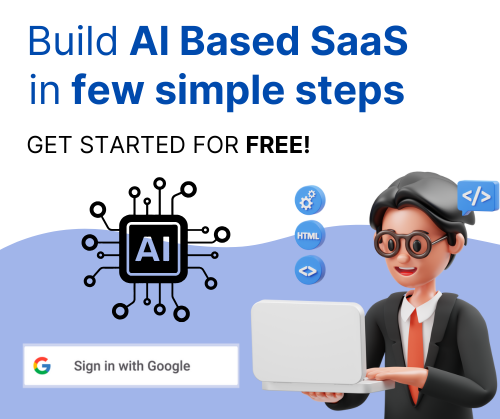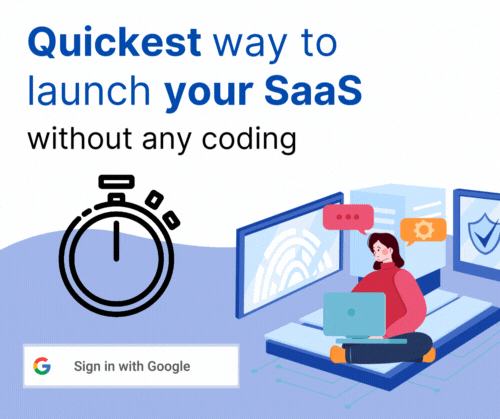Ever wondered why everyone's talking about SaaS these days? Well, there’s a good reason. These AI‑driven technologies are changing the game for businesses, and right now is the best time to jump on board. You might wonder how to come up with the best AI SaaS ideas.
Don’t worry, in this blog, we have covered why launching an AI‑based SaaS app is a big deal and provided a step‑by‑step guide so you can get started building your own AI SaaS ideas.
1. Why should you launch an AI-based SaaS application now?
Launching an AI-based SaaS application, particularly in the wake of innovations like ChatGPT, presents a timely opportunity. These AI models are getting really good at chatting like humans, making apps smarter than ever before.
In fact, according to the SaaS academy, AI is currently used by 35% of SaaS companies, and 42% say they plan to utilize it soon.
Moreover, people love personalized stuff, and ChatGPT does that well by learning from chats and giving customized responses. These smart tricks make apps work faster and better by understanding what people need.
Getting in early with these AI tools, like ChatGPT, can make your app stand out. The market for smart AI apps is growing fast, and users now expect apps to be super smart.
So, it's a perfect time to dive into making your SaaS app smarter with AI, making it a hit with users who want cooler and more helpful software as a service apps.
Step-by-step guide - How can you come up with your own AI SaaS idea?
Day-to-Day Activities
Detail your daily routine, interests, and hobbies. Consider activities related to work, personal projects, or leisure that involve communication, content creation, problem-solving, or any other relevant tasks.
For example, if you're a writer, your activities might include researching, writing drafts, editing, and publishing content.
Consider whether people around you share similar struggles. Are your friends, colleagues, or family members facing challenges similar to yours in their daily lives?
Identify Problems Faced
Look closely at pain points or inefficiencies encountered during your daily activities. These could be repetitive tasks, time-consuming processes, or areas where you feel there could be improvement.
For a writer, this might involve struggling with grammar checks, maintaining a consistent writing style, or managing multiple drafts efficiently.
Potential Problems to Solve
Evaluate the problems you've identified and prioritize those that seem solvable or improvable. Think about whether others might also face similar issues. Consider the scope and impact of each problem.
For a writer, a common problem could be spending too much time on proofreading and editing instead of focusing on content creation.
LLM Related Problems
Explore challenges where language processing, understanding, or generation could play a significant role. Identify issues where AI-based language models could be applied.
For instance, in content creation, LLMs could assist in automating proofreading, suggesting better word choices, or even generating content outlines.
Solutions with Software
Brainstorm how LLMs or language processing software could address the identified problems. Think about integrating these models into software solutions.
For instance, creating AI‑powered writing assistant tools that offer real-time grammar checks, style suggestions, and content improvement recommendations.
Monetization and SaaS Opportunity
Consider the sustainability of turning your solution into a SaaS model. Research the market to understand potential customers, their needs, and the value your solution can provide. Explore subscription models, pricing strategies, and how you can differentiate your offering from existing solutions.
For example, you can get basic grammar checks for free, and if you want more advanced features, you can subscribe.
Here are some AI SaaS products that are making waves in the market.
Most popular AI SaaS ideas
1. Content Generation
AI-powered content generation tools are revolutionizing the way content is created. These systems utilize advanced algorithms to craft SEO-friendly articles, social media posts, and tailored content. By understanding audience preferences, they streamline content creation processes, saving time and enhancing audience engagement for businesses.
SaaS product idea - Tools like Writesonic and Copy.ai simplify creatiThis could be a very profitable subscription based SaaS business.ng AI‑driven content by generating catchy headlines, social media posts, and even blog articles. They use data to figure out what the audience likes, making it easy for businesses to create content.
2. Customer Support
AI is reshaping customer support with its intelligent systems like chatbots and virtual assistants. These solutions offer immediate responses, available 24/7, addressing queries and providing assistance.
Through machine learning, they improve their responses, delivering personalized and efficient support experiences for users.
SaaS product idea - Think of chatbots like those on websites. They instantly answer questions about products or services, saving time and making sure customers get help even when human support isn't around.
3. Sales Automation
Sales processes benefit significantly from AI-driven automation. These tools predict customer behavior, automate routine tasks, and optimize sales strategies. They look at lots of data to work better, find good leads, and improve how they sell things, which helps to boost the businesses.
SaaS product idea - Sales platforms like Salesforce use AI to predict which leads are most likely to buy. They analyze data to figure out the best way to approach each customer, making the sales team's job easier and more effective. This could be a very profitable AI‑powered SaaS business.
4. AI-Based Financial Assistance
In the financial sector, AI contributes to managing finances efficiently. These systems detect flaws, provide personalized investment advice, and optimize financial decisions. By leveraging machine learning, they ensure better security and accuracy in financial management.
SaaS product idea - Apps like Wealthfront and Betterment use AI to create personalized investment strategies based on goals and risk tolerance. They use data to make financial decisions easier and safer for users.
5. Medical and Healthcare Support
Healthcare embraces AI for diagnostics, treatment planning, and patient care. These AI solutions analyze medical data, offering personalized treatment options, improving diagnosis accuracy, and ultimately enhancing patient outcomes.
SaaS product idea - AI systems like IBM's Watson Health analyze tons of medical info to help doctors make better decisions about treatments. They pick up patterns that might be missed by humans, improving patient care.
6. AI-Based Education Assistance
AI transforms education by offering personalized learning experiences, adaptive assessments, and content creation. These tools cater to individual learning styles, providing tailored materials and assessments, thereby improving student engagement and learning outcomes.
SaaS product idea - Platforms like Duolingo use AI to adapt lessons to each learner's level. They track progress and adapt, making sure learners get the right challenges at the right time, making learning a breeze.
7. AI-Based Cybersecurity
AI fortifies cybersecurity measures by detecting and preventing cyber threats. These systems employ advanced algorithms to identify patterns and anomalies in real-time, offering robust defense mechanisms against evolving security risks.
SaaS product idea - Security systems like Darktrace use AI to spot strange patterns in networks and stop cyber threats before they cause trouble. They keep networks safe by staying ahead of attackers. As a subscription based SaaS it will make cybersecurity more accessible and affordable.
8. AI-Based Human Resource Support
Human Resource departments benefit from AI tools in talent acquisition, employee engagement, and data-driven decision-making. These solutions streamline hiring processes, improve employee satisfaction, and enable data-driven HR strategies for businesses.
SaaS product idea - Tools like Workday help in hiring by analyzing candidate data, making it easier to find the right fit for a job. They also track employee satisfaction, helping HR make better decisions for the team.
9. AI-Powered Design Tool
Graphic design can be quite laborious. Additionally not everyone is aesthetically gifted to come up with sleek looking designs. Many people need help with graphic design. That is the biggest reason behind grand success of a platform like Canva. But today we still don't have a high quality AI based tool that can reliably produce graphic design and creatives.
SaaS product idea - Develop an application that generates design assets (like logos, social media graphics, and marketing materials) based on user preferences or branding guidelines. Users can simply input their requirements, and the tool will create multiple design options. Subscription based pricing will make it an attractive alternative to hiring designers.
10. Recruitment Tool
Recruitment is another sector that involves quite a bit of laborious work. Screening and hiring from a wide pool of candidates involved many laborious steps from - sourcing and screening to interviewing, evaluating, finally ending with salary negotiations. Automating things like screening CVs and some basic video interviewing steps, can create great efficiency in the hiring process.
SaaS Product Idea - An AI based SaaS business that can connect with different hiring platform APIs is a great way to source a lot of candidates at scale based on a simple job description. As a next step, our AI tool should ideally contact the shortlisted candidates and ask them to submit video responses to a hiring questionnaire and then evaluate the responses using something like Open AI Whisper APIs.
11. Generative Music Composer
Similar to graphic design, music is another industry where AI can potentially make some disruptive moves. But this SaaS idea is technically quite challenging and will require a lot of training for AI models.
SaaS Product Idea - Create a tool that generates original music compositions based on user preferences, including genre, mood, and instruments, catering to content creators in need of unique soundtracks. Or a simpler version is this can be an AI based song writer instead of going for a full fledged music composer.
Each of these AI-based SaaS startup ideas signifies a shift towards smarter, more efficient operations in various industries. Also, look at these GenAI companies for your reference. Using AI makes things better for people, helps things run smoother, and helps businesses grow in lots of areas, making the future smarter and more efficient.
Conclusion
To conclude, launching an AI‑based SaaS app right now with the help of Fuzen. AI is solving everyday business challenges like content creation, customer support, and sales. With AI-based SaaS and no-code AI SaaS builders, you can turn ideas into real products—fast and without coding.
Now’s the time to explore AI SaaS ideas and start building your own AI-powered solution.

